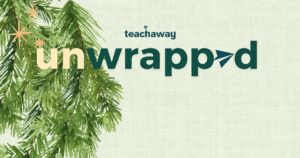February marks the start of Black History Month in Canada and the US, and LGBTQ+ History Month in the UK. It’s an opportunity to reflect and learn more about what schools can do to embrace diversity and foster cultures of respect and acceptance.
Introducing students to different cultures, histories, and experiences, is one way of teaching inclusion in our classrooms. By embracing diversity and celebrating all cultures at our schools, compassion becomes a part of daily life and gives students a sense of belonging.
Research from a US survey on high school student sense of belonging shows that students who feel valued and included are more likely to be satisfied with their experience at school and stay through graduation.
In a similar UK survey, results show that only 39% of respondents felt a sense of belonging to their university community. Students with disabilities had lower levels of belonging.
Feeling a lack of connection to a community is one problem. But underrepresentation can present itself in many other places that can be easily overlooked, like in course content. Interestingly, in this survey, 69% of respondents agreed their course content included varied, diverse voices.
There are opportunities everywhere to create more inclusive school communities. Here are a few ways to start fostering a sense of belonging at your school.
Promote Culturally Responsive Teaching Practices
Teacher bias is a problem. It’s a tough one to practice because it requires an objective sense of self-awareness and the ability to think outside one’s self, but it can be done.
Culturally responsive professional development courses are one way to learn how to adapt teaching strategies that meet the diverse needs of students from different cultural backgrounds. Teachers can learn how to create an inclusive, diverse classroom and develop teaching practices that are sensitive to the diverse student populations in their schools.
Provide A Safe And Supportive Learning Environment For All Learners
Fostering a culture of respect and acceptance creates a safe learning environment for all students. Students of all sexual orientations, and ethnicities, with different physical abilities, or second language, and learning needs are well-deserving of attending a school that offers a sense of belonging.
Teachers can create an inclusive classroom by fostering a culture of respect and acceptance. This can be done by providing training and resources to faculty and staff, as well as students, on how to embrace our ‘sames’ and differences. This could include a diversity-focused curriculum and activities and encouraging open dialogue about differences and respect.
Celebrate Diversity In Schools
According to the American Psychological Association, bullying is caused by an imbalance of power. Examples include physically stronger youth picking on weaker peers, older students harassing younger students, or numerical majority group members deriding numerical minority members. A single traumatic incident of peer victimization can be painful and raise fears about continued abuse.
Celebrating diversity in schools is necessary to promote understanding and inclusion. Schools can celebrate diversity by hosting events and activities that highlight different cultures and traditions, like cultural diversity fairs, or festivals. Schools can also create clubs or organizations that are inclusive to create visibility for more groups.
Recruiters: Attend DEIJ Hiring Fairs
Attending DEIJ hiring fairs to connect with job-seeking teachers who share your values is a step toward creating change through education. Here are a few numbers to show what kind of impact DEIJ has on a variety of industries, including education:
- $12tn in additional GDP if the gender gap is narrowed by 2025
- $2bn in potential revenue if financial inclusion efforts broaden services for black Americans
- 160m women may need to change jobs through 2030 due to automation
- Nearly 60 percent of institutions fall short of representational parity for students.
- Nine in ten institutions have significant gaps in parity for students, faculty, or both
- Only 28% of international schools in an ISC survey reported that it is true that teachers in their school feel responsible for the education of children with special educational needs
[Sources: McKinsey and ISC Research]
DEIJ hiring fairs are fantastic opportunities to talk about your school’s DEIJ recruitment policies and attract candidates who are also working toward creating inclusive school communities.
Hiring teachers that reflect the diversity of the community actively nurtures and supports all students of all gender identities, cultural backgrounds, and diverse needs. Download our latest International Education Recruitment Report to learn more.
Teachers: Teach For Schools With DEIJ Policies
Inquiring about DEIJ policies before signing on with a school would be a good indication of a school’s culture and practices. Working together with other educators and support staff who prioritize student representation, gender equity, and inclusivity is a smart move toward making real progress.
Conclusion
Schools are a reflection of the future. Celebrating diversity creates a better experience in education. A better classroom means a better world.
If teaching is your calling to make a difference in students’ lives, learn more about Teach Away’s Teacher Certification Program. It’s flexible, affordable, state-approved, AAQEP-accredited, and can be completed in under a year. Compassionate teachers like you could be exactly what the future generations of students need right now.



